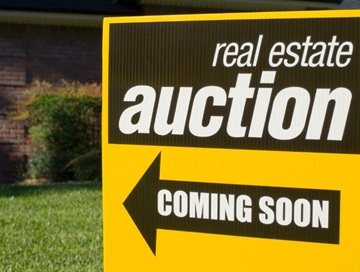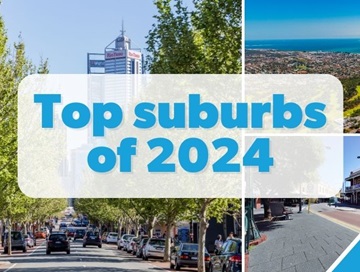The only way was up for WA property prices in the September quarter: REIA
22 December 2023"REIWA CEO Cath Hart said despite the increase in the median house price, Perth remained relatively affordable, particularly when compared to the Eastern States."

Median house and rent prices rose in Perth during the September 2023 quarter, according to the latest REIA Real Estate Market Facts.
The median sale price for three-bedroom houses rose 2.6 per cent over the quarter to $595,000, while the median sale price for two-bedroom other dwellings rose 1.8 per cent.
Over the year to September, three-bedroom houses recorded an increase of 11.0 per cent while two-bedroom other dwellings rose 1.3 per cent.
REIWA CEO Cath Hart said despite the increase in the median house price, Perth remained relatively affordable, particularly when compared to the Eastern States.
“Our median is marginally higher than Darwin, which has a median of $590,000, and well below the next lowest priced state, which is Adelaide at $710,000,” she said.
“We’re more than two and a half times more affordable than Sydney at $1,578,000.
“What we also need to remember is that while we have seen strong growth in recent years – up 22.6 per cent on the previous low of $477,000 REIWA recorded in 2019, we are only 7.3 per cent above the previous high of $545,000 set in 2014. Home ownership remains attainable in our state.
“And I think there are many owners, particularly those who bought before our long decline who are quite relieved to see prices rise.”

Ms Hart said ongoing strong population growth, constraints in the building industry and the challenges of the rental market were maintaining the high demand for established homes, which was then fuelling price growth.
“Homes continue to sell in record times, which highlights the demand for established property,” she said.
“Market conditions indicate this will continue and we can expect more price growth in the coming months.”
Darwin (+4.4 per cent) recorded the highest median house price growth over the quarter, followed by Perth. Canberra (-5.6 per cent) and Melbourne (-0.2 per cent) were the two states/territories to record declines.
Hobart (+5.4 per cent) saw the most growth in the median price for other dwellings.
Perth was the second most affordable capital city by median house price and median price for other dwellings, with Darwin marginally more affordable in both categories. Despite the increase in prices, Perth is also one of the most affordable cities based on the proportion of income needed to meet mortgage payments.
Median three-bedroom house sale prices: Perth and regional centres
Over the quarter, the median price for three-bedroom houses increased in Perth Inner (+0.8 per cent), Perth Middle (+1.4 per cent) and Perth Outer (+3.4 per cent).
In regional WA, it increased in Bunbury (+3.2 per cent) and Albany (+6.7 per cent) but decreased in Broome (-2.0 per cent).
Annually the story was the same, with the median house price rising in all Perth areas: Perth Inner (+3.7 per cent), Perth Middle (+7.7 per cent) and Perth Outer (+12.8 per cent).
Their quarterly performance was also reflected in the regions’ annual results. Over the year Bunbury (+10.6 per cent) and Albany (+0.7 per cent) recorded increases in their median house prices, while Broome (-6.7 per cent) saw a decline.
Median two-bedroom other dwelling sale prices: Perth and regional centres
Over the three months to September, the median price for two-bedroom other dwellings increased in Perth Inner (+3.2 per cent), Perth Middle (+0.5 per cent) and Perth Outer (+2.9 per cent).
In regional WA, it increased in Broome (+2.6 per cent), but decreased Bunbury (-15.9 per cent) and Albany (-5.9 per cent).
Over the past 12 months, the median price for other dwellings increased in Perth Middle (+0.5 per cent) and Perth Outer (+9.7 per cent) but decreased in Perth Inner (-1.0 per cent).
In the regions, Bunbury (+27.5 per cent) and Broome (+3.9 per cent) recorded annual increases in the median price for other dwellings, while Albany (-3.5 per cent) saw a decline.
Median weekly rent
Median weekly rent prices for three-bedroom houses held stable at $550 over the quarter but rose 10 per cent to $550 for two-bedroom other dwellings.
Annually median rents for three-bedroom dwellings have risen 17 per cent and 22.2 per cent for two-bedroom other dwellings.
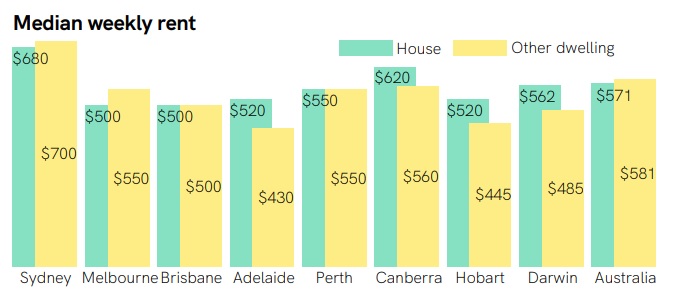
Ms Hart said while Perth rents were now some of the more expensive in the country, Perth was still among the most affordable states based on the percentage of median weekly income required to meet rental payments.
“Rents are at record highs, but they only require 21.5 per cent of median weekly income – only Victoria and the ACT are more affordable,” she said.
“Rents are marginally more affordable than in the June quarter, and interestingly they are more affordable now – as a portion of weekly income – than they were 10 years ago, according to the REIA research. WA has seen an increase in median income over that time, which has helped many tenants meet the increases.”
Median house rent prices: Perth and regional centres
Over the quarter, the median rent for three-bedroom houses increased in all Perth areas: Perth Inner (+1.4 per cent), Perth Middle (+3.3 per cent) and Perth Outer (+3.6 per cent).
In regional WA, rents increased in Bunbury (+1.9 per cent), remained stable in Broome, but decreased in Albany (-1.1 per cent).
Over the year, the median rent for houses also increased in all Perth areas: Perth Inner (+11.9 per cent), Perth Middle (+18.1 per cent) and Perth Outer (+18.8 per cent).
Annually, all regions saw increases in their median house rent: Bunbury (+11.1 per cent), Broome (+33.3 per cent) and Albany (+13.9 per cent).
Median two-bedroom dwelling rent prices: Perth and regional centres
The median rent for other dwellings increased in all Perth areas in the September quarter: Perth Inner (+5.5 per cent), Perth Middle (+4.0 per cent) and Perth Outer (+4.4 per cent).
In regional WA, only Broome (+23.8 per cent) saw an increase, with rents falling in Bunbury (-24.2 per cent) and Albany (-3.4 per cent).
Annually, all Perth areas recorded increases in their median rent for other dwellings: Perth Inner (+20.8 per cent), Perth Middle (+18.2 per cent) and Perth Outer (+14.6 per cent).
Looking at the regions, rents in Broome (+44.4 per cent) surged and increased slightly in Albany (+1.2 per cent) but declined in Bunbury (-6.5 per cent).
Vacancy rate
In the September quarter, the vacancy rate in Perth decreased to 0.7 per cent, a decline of 0.1 percentage points over the quarter but an increase of 0.1 percentage points over the past year.
Perth remained one of the tightest rental markets in the country and was one of only two states to record a vacancy rate below 1 per cent. Adelaide’s rental market was more constrained, with a vacancy rate of 0.6 per cent.
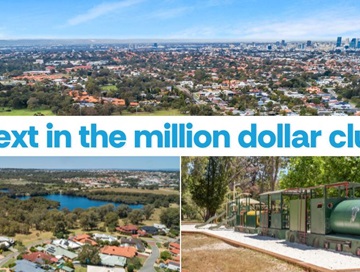


50e25bd9-b09e-4797-9141-57fcfc26f994.tmb-rcarousel.jpg?sfvrsn=6acb5574_1)
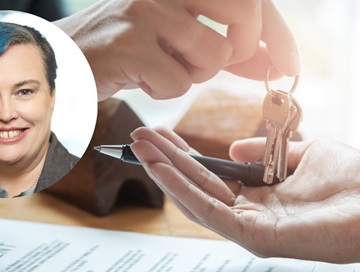
.tmb-rcarousel.jpg?sfvrsn=c8a92f77_1)
.tmb-rcarousel.jpg?sfvrsn=e8b3cd5_1)
